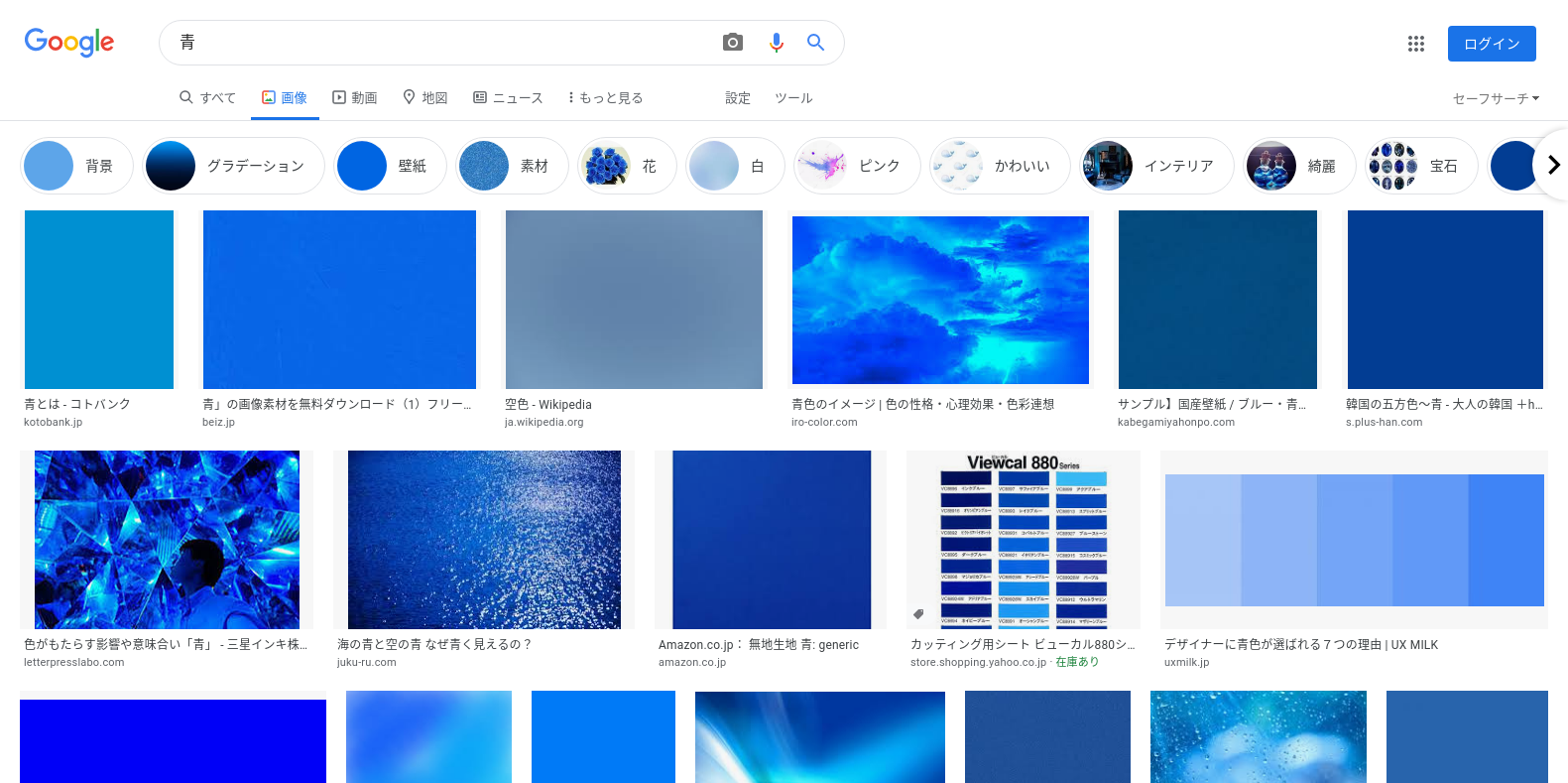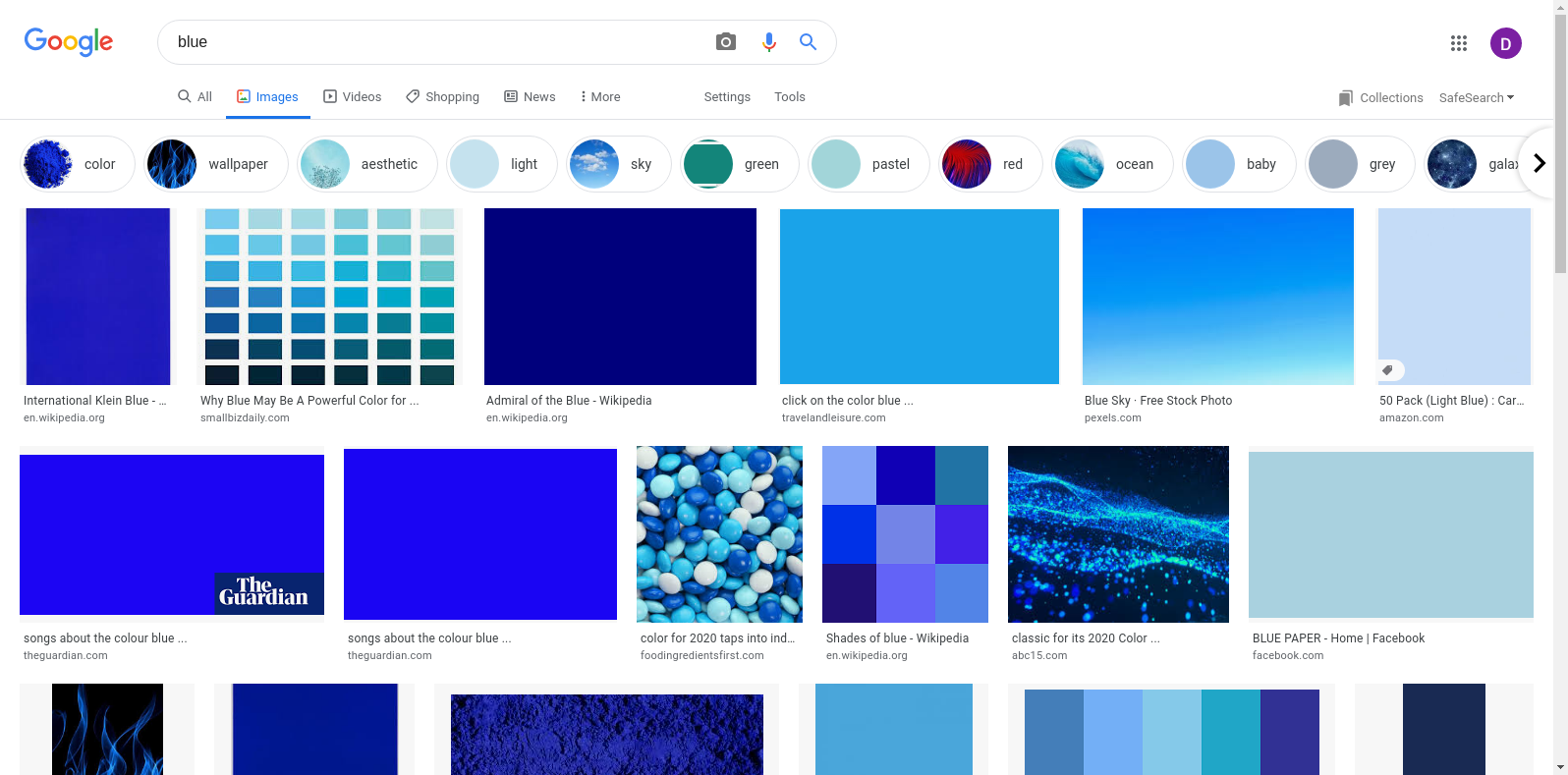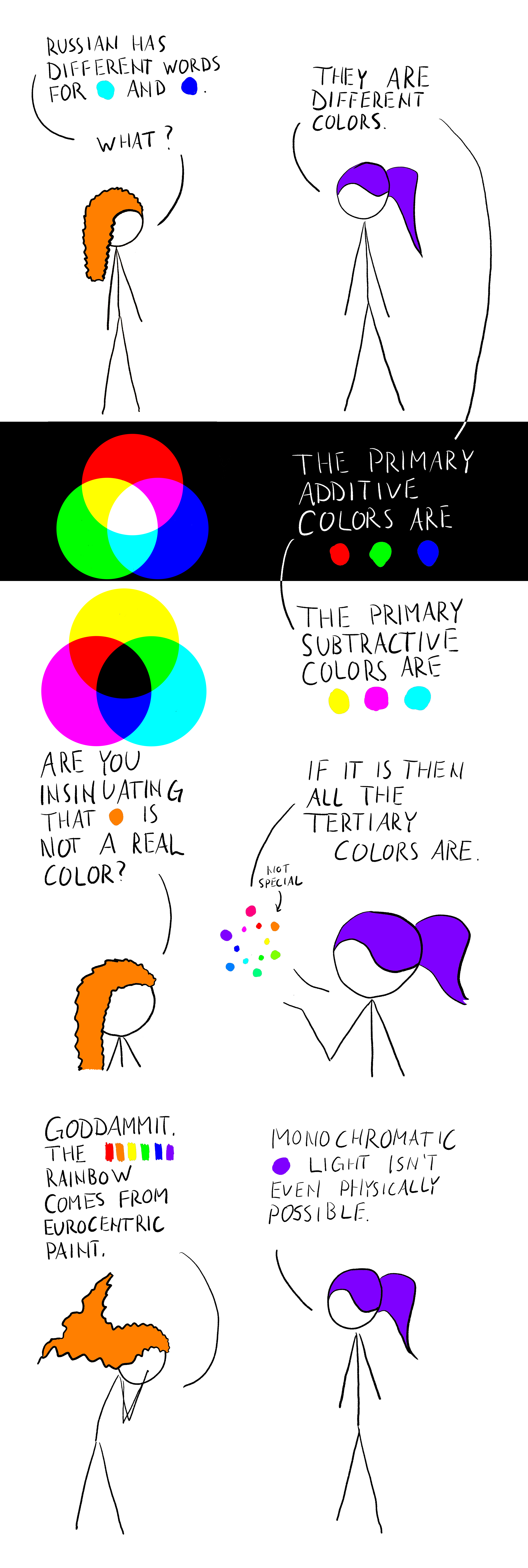When I was 13, the coolest thing in the world was Seto Kaiba summoning a Blue-Eyes White Dragon.

The name "Blue-Eyes White Dragon" is a translation of the Japanese "青眼の白龍".
- "龍" means "dragon".
- "白" means "white".
- "の" turns the previous word into an adjective.
- "眼" means "eyes".
- "青" has no English equivalent.
The word "青" heralds back to a time before the adoption of green (緑) in the Heian period. I speculate that before the Heian period the primary colors used to be white, black, red, gold and 青. "青" is usually translated as "a color spanning blue or green". But to define "青" in terms of blue and is to contort it into a foreign ontology. We don't define "blue" as "a color spanning голубой and синий".
To us, "blue" is a singular color with an ideal RGB value around 0x0000ff.

If you asked a pre-Heian Japanese peasant to imagine the color 青 then ze wouldn't imagine the modern colors blue and green side-by-side. Ze would picture a single color. We can't look up how a pre-Heian Japanese person pictured 青 but we can look up what 青 looks like in modern Japanese by searching for it on Google.

For comparison, here are the corresponding English results for "blue".

At first glance, these colors appear similar—and they are. But, conceptually, they are derived from different things. The first (top left) image of Japanese 青 is lighter than the equivalent image of English blue. 青 is the color of the sky as seen between clouds or reflected by the ocean. "Blue" is the color of indigo dye and blue jeans. That's why we have to specify the "sky blue" variant in English. "Blue" is the color of blue pigment.
What about the Chinese 青 from which the Japanese 青 is derived?

The Chinese results for "青" are closer to turquoise than to blue AND they include images of sky and water like the Japanese results. The things associated with the color 青 are more similar between Japanese and Chinese even though the absolute value of the colors are more similar between Japanese and English. 青 is the color of nature and plants. Blue is the color of the future and pants.
I hypothesize the Japanese 青 used to be the same as the Chinese 青 but the Japanese ontology of colors drifted towards the European concept of blue due to greater cultural influences from the West.
